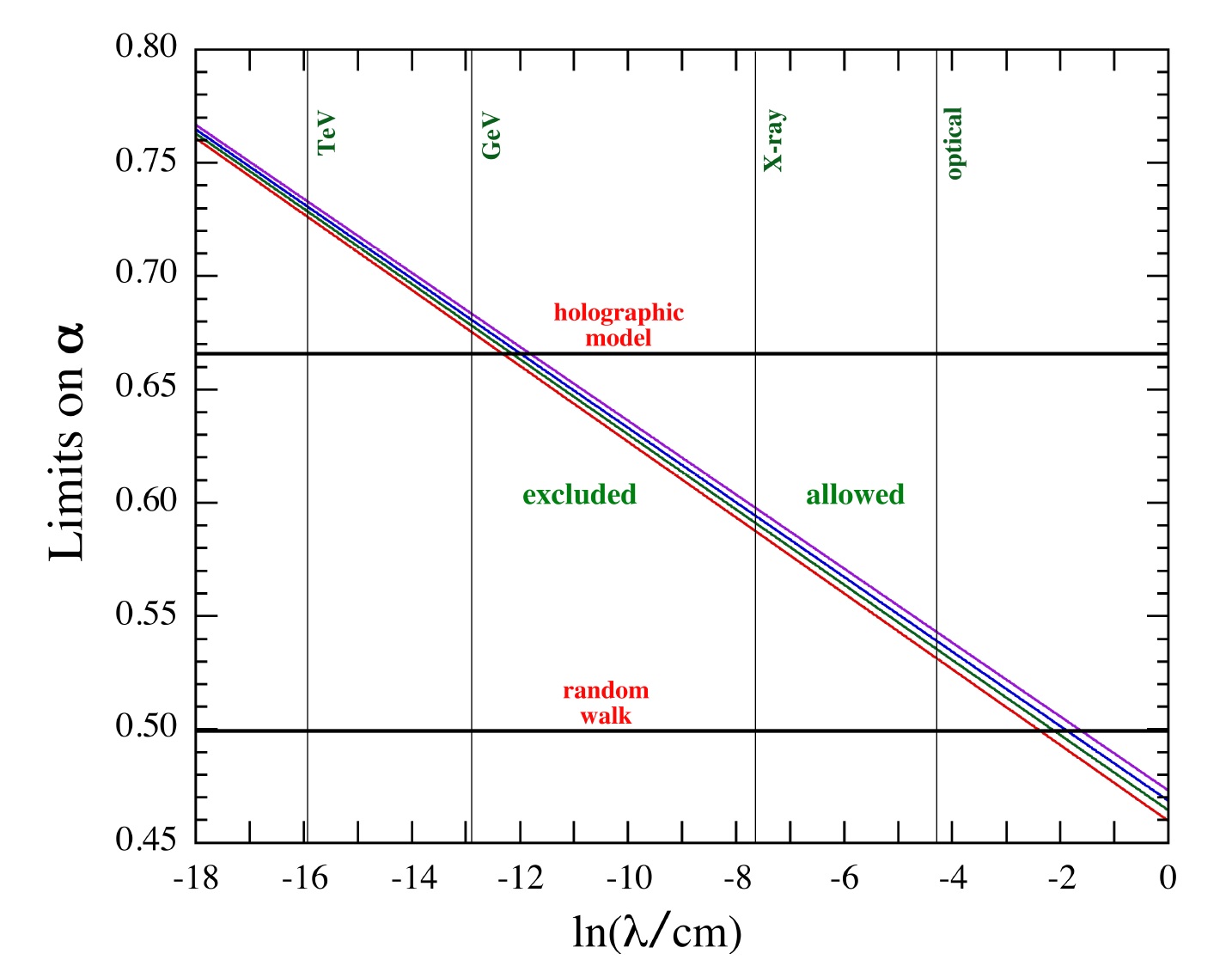The observations were taken and the data analyzed for this effect. In "New Constraints on Quantum Gravity from X-Ray and Gamma-Ray Observations" by E. S. Perlman1, S. A. et.al. (1,2,3) Comparisons were made to computer simulations of what we would expect for a space time that was completely classical and essentially foam free. This all comes down to a parameter
 .
.  corresponds to the assumption of Wheeler, a pioneer in this field, that the fluctuations due to space time foam would be no bigger than the Planck length.
corresponds to the assumption of Wheeler, a pioneer in this field, that the fluctuations due to space time foam would be no bigger than the Planck length. 
(The colored lines indicate light propagating from various commoving distances. The simple way to look at this graph is if a model predicts alpha above the line the model is on good ground. If the model predicts alpha below the diagonal lines that model needs revision)
The paper concludes that alpha can't be any less than 0.76 at gamma ray wavelengths and beyond which rules out models which predict strong spin foam effects on light. The shorter the wavelength of the light, the stronger the quantum effects it can probe for. Think of it this way. If you are measuring something a meter long and bump it by half a centimeter you might not notice. If you are measuring something a centimeter long and bump it by half a centimeter you will always notice. The shorter the wavelength of the light, the more sensitive of a probe it is to small fluctuations due to the hypothetical quantum foam effects. In particular the authors note that their results rule out some common holographic models but not the holographic principle. The holographic principle can still play a more subtle role in future models of quantum gravity.
For my personal stake in this, these observations are consistent with the theory of Relativization which I discussed here , published three papers on (4), and gave a talk at the April 2015 APS meeting about (5). It follows from the axioms of that theory that at large length scales no such fluctuations would be observed. Quantum interactions are local propagation over long distances is governed by relativity and essentially classical.
Models with a quantum foam are not dead because of this. Loop Quantum Gravity and its Spin Foam Model of Space-Time can likely accommodate this result by modification of the Immirzi parameter. Sting theories which predicted a strong quantum foam interaction can be replaced by those which predict a weaker interaction.
As we probe shorter wavelengths and longer distances in new ways we will learn more. The constraints will become tighter. Right now I'm betting on alpha equals one. If alpha is found to be 0.95 or 0.98 or 0.8 I will celebrate because man kind will have learned something very fundamental about the universe no matter which one of us is right.
References:
1.) arXiv:1411.7262
2.) The Astrophysical Journal, Volume 805, Issue 1, article id. 10, 10 pp. (2015).
3.) Nasa ADS record will all relevant reference information.
4.)Hontas Farmer, Fundamentals of Relativization, The Winnower 2:e141487.76774 (2014). DOI: 10.15200/winn.141487.76774
5.) "Quantum Gravity are We asking the right question?" http://meetings.aps.org/Meeting/APR15/Session/C13.6





Comments